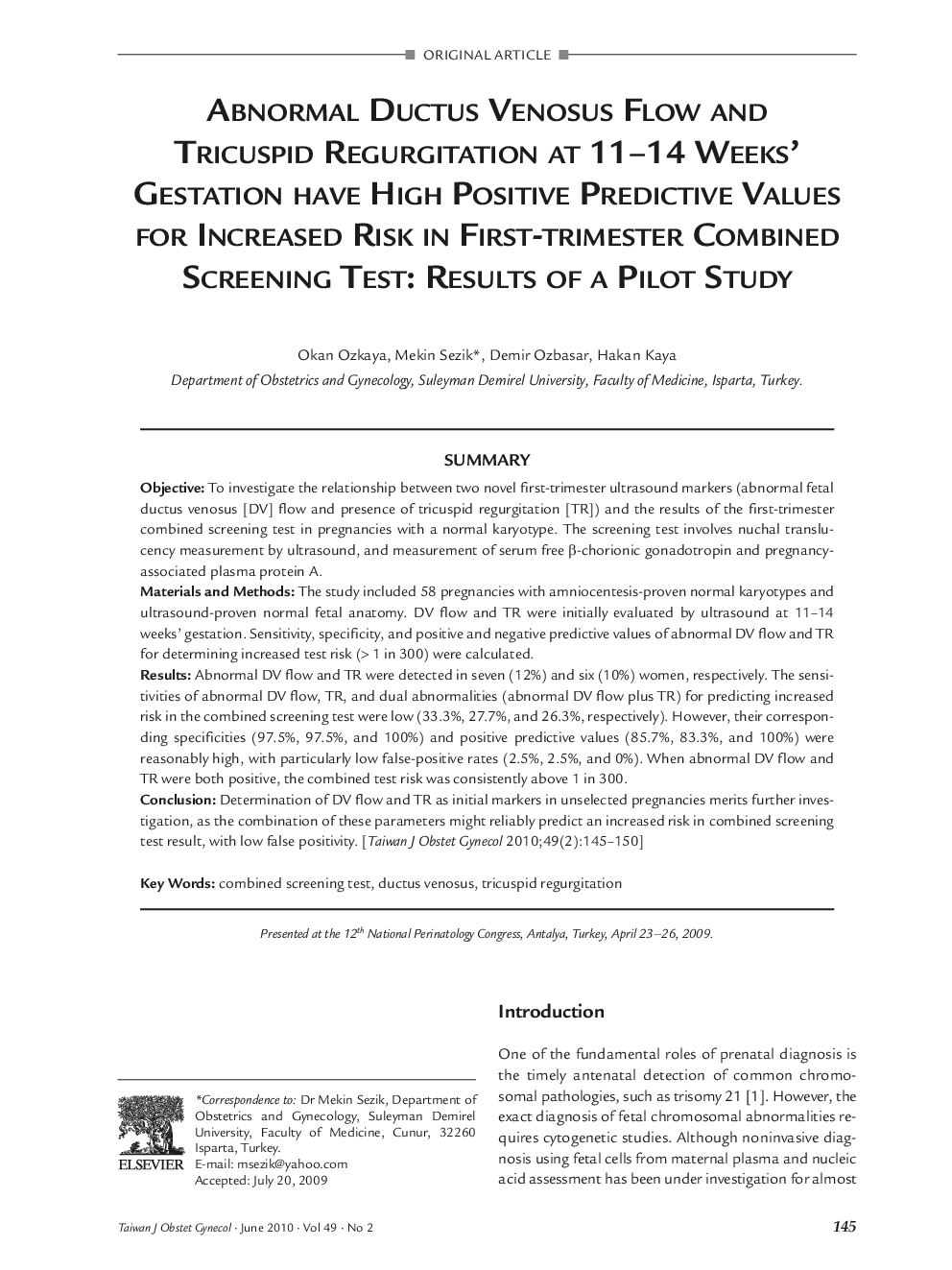| Article ID | Journal | Published Year | Pages | File Type |
|---|---|---|---|---|
| 3975840 | Taiwanese Journal of Obstetrics and Gynecology | 2010 | 6 Pages |
SummaryObjectiveTo investigate the relationship between two novel first-trimester ultrasound markers (abnormal fetal ductus venosus [DV] flow and presence of tricuspid regurgitation [TR]) and the results of the first-trimester combined screening test in pregnancies with a normal karyotype. The screening test involves nuchal translucency measurement by ultrasound, and measurement of serum free β-chorionic gonadotropin and pregnancyassociated plasma protein A.Materials and MethodsThe study included 58 pregnancies with amniocentesis-proven normal karyotypes and ultrasound-proven normal fetal anatomy. DV flow and TR were initially evaluated by ultrasound at 11–14 weeks' gestation. Sensitivity, specificity, and positive and negative predictive values of abnormal DV flow and TR for determining increased test risk (> 1 in 300) were calculated.ResultsAbnormal DV flow and TR were detected in seven (12%) and six (10%) women, respectively. The sensitivities of abnormal DV flow, TR, and dual abnormalities (abnormal DV flow plus TR) for predicting increased risk in the combined screening test were low (33.3%, 27.7%, and 26.3%, respectively). However, their corresponding specificities (97.5%, 97.5%, and 100%) and positive predictive values (85.7%, 83.3%, and 100%) were reasonably high, with particularly low false-positive rates (2.5%, 2.5%, and 0%). When abnormal DV flow and TR were both positive, the combined test risk was consistently above 1 in 300.ConclusionDetermination of DV flow and TR as initial markers in unselected pregnancies merits further investigation, as the combination of these parameters might reliably predict an increased risk in combined screening test result, with low false positivity.
